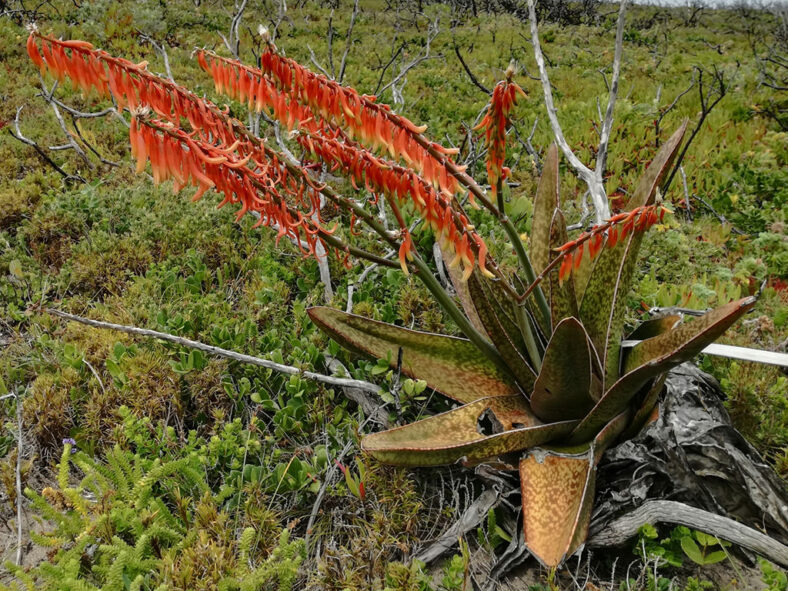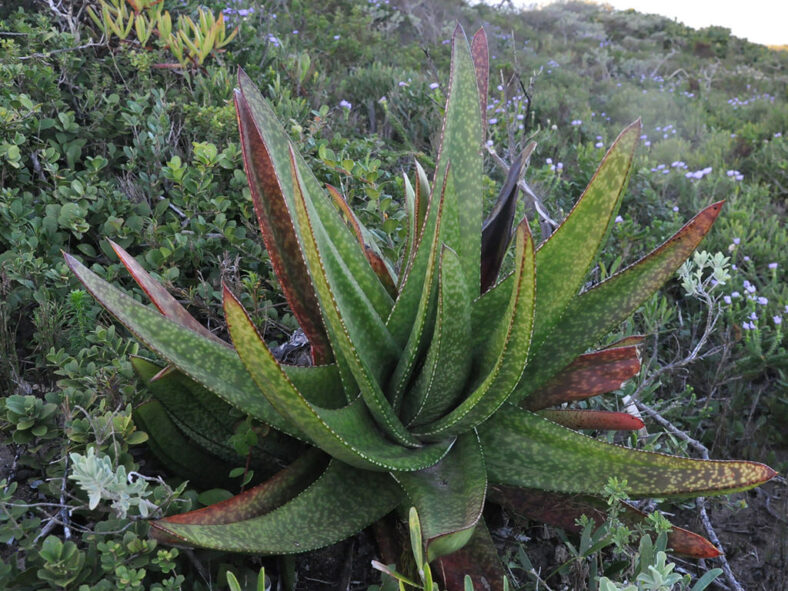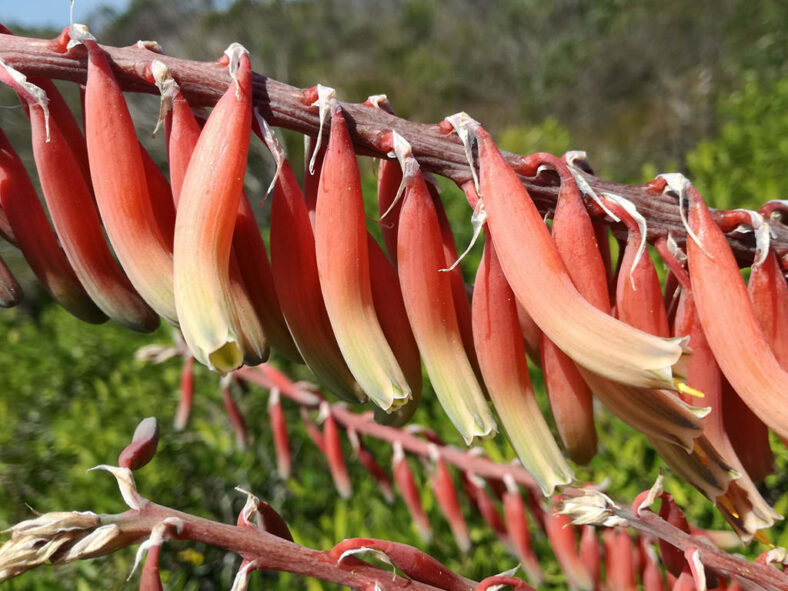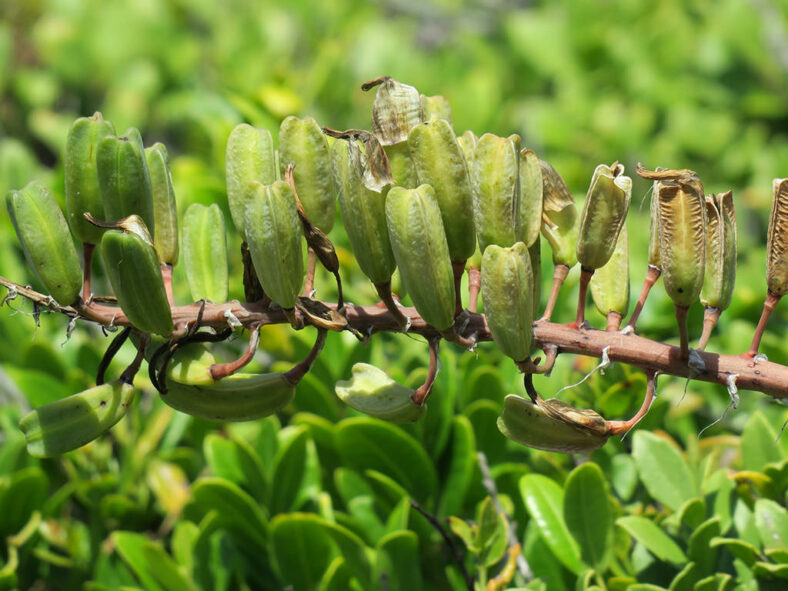Gasteria acinacifolia is the largest species of Gasteria. It is commonly cultivated for coastal gardens or as a container plant.
Scientific Name
Gasteria acinacifolia (J.Jacq.) Haw.
Common Name(s)
Coast Ox-tongue, Dune Gasteria, Giant Gasteria
Synonym(s)
Aloe acinacifolia
Scientific Classification
Family: Asphodelaceae
Subfamily: Asphodeloideae
Tribe: Aloeae
Genus: Gasteria
Etymology
The specific epithet "acinacifolia" (pronounced "ah-see-na-see-FOH-lee-uh") means "having scimitar-shaped leaves" and refers to the long, sharp leaves of this species.
Origin
Gasteria acinacifolia is native to South Africa. It usually grows in the shade of coastal dune thicket in a narrow belt along the southern Cape Coast, from Knysna to Port Alfred.
Description
Gasteria acinacifolia is a stemless succulent that forms large rosettes of smooth, erectly spreading, strap-shaped leaves. It can grow solitary or produce offsets from the base, creating a small clump over time. The leaves are dark green and adorned with dense white spots arranged in transverse bands. Each leaf has a distinctly eccentric keel and can grow up to 24 inches (60 cm) long and 4 inches (10 cm) wide. The juvenile leaves typically have distinct domed tubercles.
During spring and early summer, Gasteria acinacifolia produces indistinctly basally gasteriform flowers for half its length. The flowers can reach up to 2 inches (5 cm) in length and have a pink gasteriform portion and a white tube with green striations. They usually appear in erect or inclined, branched inflorescences with side branches that are either horizontal or erectly spreading. The inflorescence can grow up to 3.3 feet (1 m) tall.

How to Grow and Care for Gasteria acinacifolia
Light: Gasteria acinacifolia thrives with some protection from direct sunlight. If the leaves turn white or yellow, it usually means the plant is receiving too much sunlight.
Soil: A well-draining potting mix is essential for this plant's healthy growth. You can use commercial soil for succulents or make your own potting mix.
Temperature: This plant enjoys warm summers and slightly cool winters. It grows best in USDA Plant Hardiness Zones 10a to 11b, with average minimum winter temperatures ranging from 30°F to 50°F (- 1.1°C to 10°C).
Watering: During the growing season, water the plant thoroughly, allowing the soil to dry out between waterings. Reduce watering to every other month in winter, but don't stop completely. Do not let water accumulate between the leaves.
Fertilizing: Although Gasteria acinacifolia does not require much fertilizer, applying some can help promote optimal growth. Use a water-soluble fertilizer only during the growing season.
Repotting: When the plant outgrows its pot, repot it into a new, slightly larger pot with fresh soil. Spring is the best time to repot and is also ideal to take offsets for propagation.
Propagation: Gasteria acinacifolia is usually propagated by offsets, but it can also be grown from leaf cuttings or seeds. Remove the offsets in spring and early summer, and sow the seeds in summer.
See more at How to Grow and Care for Gasteria.
Toxicity of Gasteria acinacifolia
Gasteria acinacifolia is considered non-toxic and safe around kids and pets.
Links
- Back to genus Gasteria
- Succupedia: Browse succulents by Scientific Name, Common Name, Genus, Family, USDA Hardiness Zone, Origin, or cacti by Genus
Photo Gallery
Click on a photo to see a larger version.


